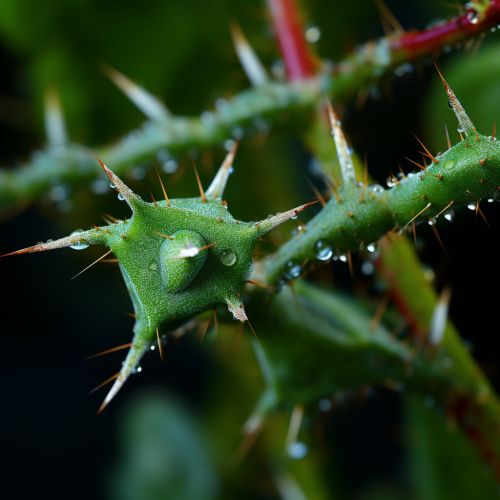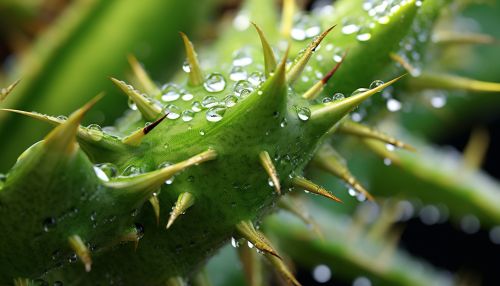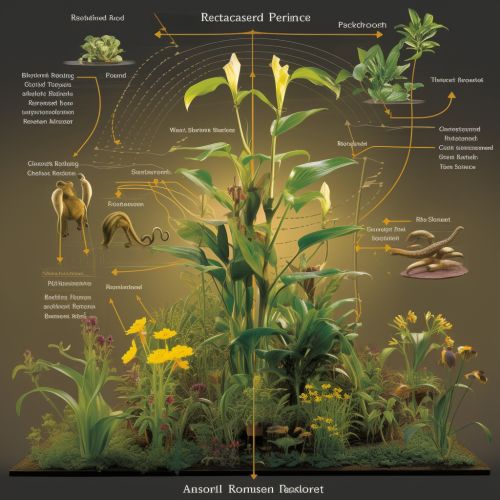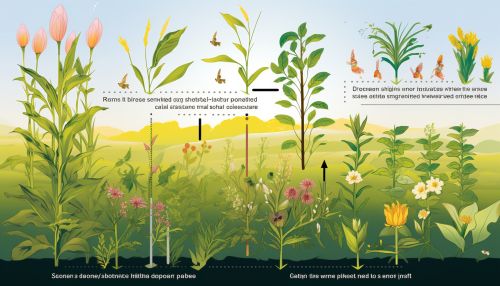Plant Defense Mechanisms
Introduction
Plants, unlike animals, are immobile and thus have developed a variety of defense mechanisms to protect themselves from predators and environmental stressors. These mechanisms can be broadly divided into constitutive defenses, which are always present in the plant, and induced defenses, which are produced or mobilized in response to an attack or stress condition.
Constitutive Defenses
Constitutive defenses are physical or chemical barriers that are always present in the plant. They include structural features such as thorns and spines, as well as chemical defenses like the production of toxic or repellent substances.
Physical Defenses
Physical defenses are structural adaptations that deter herbivores or create physical barriers against pathogens. These include:
- Thorns and spines: These sharp structures can physically injure herbivores, deterring them from feeding on the plant.
- Trichomes: These are hair-like structures on the plant surface that can deter herbivores by causing physical discomfort or by trapping and killing small insects.
- Bark and cuticle: These provide a physical barrier against pathogens, preventing them from entering the plant tissues.


Chemical Defenses
Chemical defenses involve the production of substances that are toxic or repellent to herbivores and pathogens. These include:
- Secondary metabolites: These are compounds that are not necessary for the plant's immediate survival, but are used to deter herbivores and pathogens. They include alkaloids, terpenoids, and phenolics.
- Plant toxins: Some plants produce toxins that can kill or incapacitate herbivores. These toxins can be present in all parts of the plant or concentrated in certain tissues.
- Antimicrobial compounds: These are substances that kill or inhibit the growth of pathogens.
Induced Defenses
Induced defenses are those that are produced or mobilized by the plant in response to an attack or stress condition. They include the production of defensive proteins and the activation of signaling pathways that coordinate defensive responses.
Defensive Proteins
Defensive proteins are produced by the plant in response to an attack and can directly harm the attacker or strengthen the plant's defenses. These include:
- Pathogenesis-related proteins: These are proteins that are produced in response to pathogen attack and can directly inhibit the growth of pathogens.
- Proteinase inhibitors: These are proteins that inhibit the digestive enzymes of herbivores, reducing their ability to digest plant tissues.
- Lectins: These are proteins that can bind to the digestive system of herbivores, causing discomfort and deterring feeding.
Signaling Pathways
Signaling pathways are activated in response to an attack and coordinate the plant's defensive responses. These include:
- Jasmonic acid pathway: This pathway is activated in response to wounding or herbivore attack and leads to the production of defensive proteins and secondary metabolites.
- Salicylic acid pathway: This pathway is activated in response to pathogen attack and leads to the production of pathogenesis-related proteins and the strengthening of physical defenses.
- Ethylene pathway: This pathway is activated in response to various stress conditions and can lead to the production of defensive proteins and the strengthening of physical defenses.


Conclusion
Plant defense mechanisms are diverse and complex, involving a combination of physical and chemical defenses, as well as induced responses to attacks. Understanding these mechanisms is crucial for the development of sustainable agricultural practices and for the conservation of plant biodiversity.
